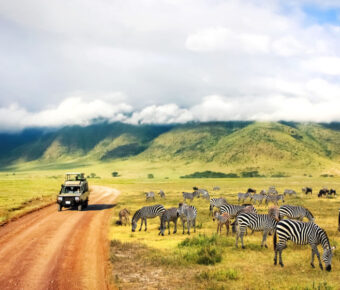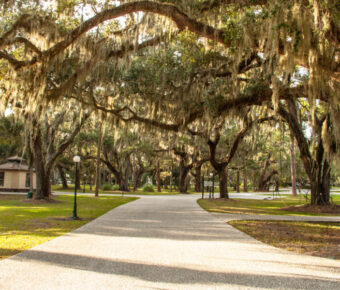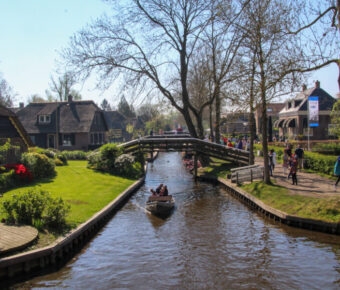
15 Most Surreal Places on Earth You Need to See Before They Disappear
Travel always finds a way to throw you for a loop. Think you’ve seen it all? Suddenly, you’re somewhere that doesn’t even feel real—like the planet decided to rewrite its own rules for a minute.
These rare spots flip your expectations and force you to look at Earth with fresh eyes.
You could be standing on rock formations sculpted by time, or staring at colors so wild they almost seem fake. But it’s not just the visuals—it’s that weird, electric feeling of “how is this even possible?” that sticks with you.
After you’ve wandered through a few of these places, you start to wonder: what else is out there, hiding in plain sight?
Table of Contents
- 15. White Desert, Egypt
- 14. Zhangjiajie Glass Bridge, China
- 13. Fly Geyser, Nevada, USA
- 12. The Wave, Arizona, USA
- 11. Aogashima Volcano, Japan
- 10. Wulingyuan Scenic Area, China
- 9. Socotra Island, Yemen
- 8. Lake Hillier Pink Lake, Australia
- 7. The Door to Hell, Turkmenistan
- 6. Mount Roraima, Venezuela
- 5. Waitomo Glowworm Caves, New Zealand
- 4. Antelope Canyon, USA
- 3. Pamukkale Thermal Pools, Turkey
- 2. Salar de Uyuni, Bolivia
- 1. Meteora Monasteries, Greece
- What Makes a Place Surreal?
- Geological Phenomena
- Unusual Ecosystems
- Human Perception and Imagination
- Frequently Asked Questions
- What hidden gems of natural beauty remain relatively untouched by tourism?
- What destinations offer the most unique geological formations on the planet?
- Where can travelers find the most vivid and unusual bioluminescent phenomena?
- What are some of the most enigmatic and mystical natural sites to explore?
- Book Your Dream Experience
- More Travel Guides
15. White Desert, Egypt
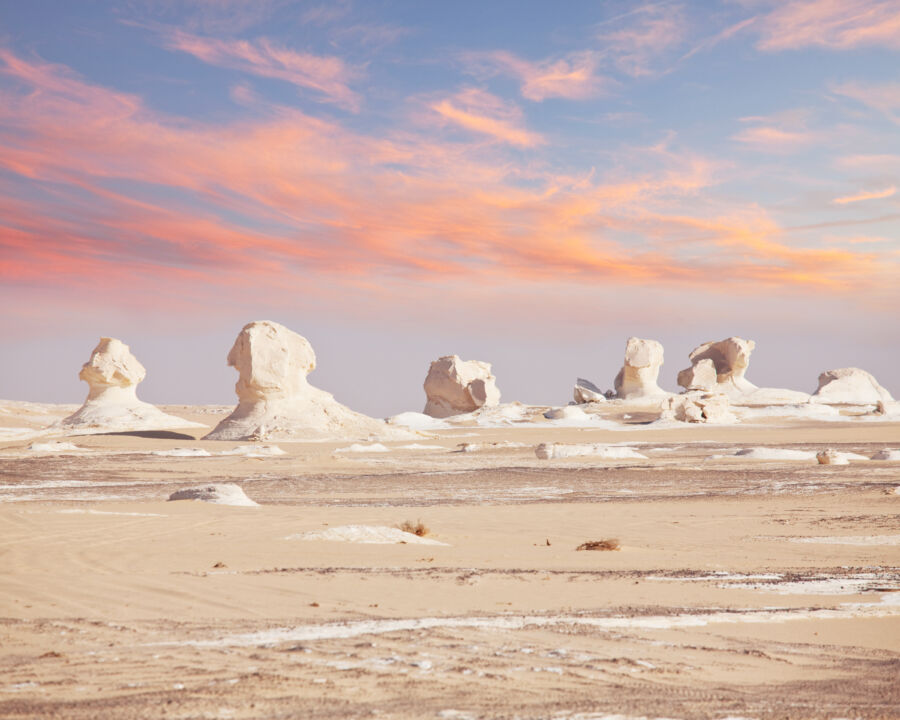
- Key features: Chalk and limestone rock formations, wind-carved shapes, stark white landscape
- Location: Farafra Depression, Western Desert, Egypt
Ever drive through endless golden dunes and then—bam—the world turns blinding white? That’s the White Desert for you. It sprawls out in Egypt’s Farafra Depression, built almost entirely from chalk and limestone, all shaped by wind that never really takes a day off.
The land sculpts itself here. Wind whittles rock, rock turns into odd shapes. Some look like towering mushrooms, others like animals frozen mid-stride. I once stood next to a formation that looked suspiciously like a chicken—Sahara surprise, right?
You’ll cross the Black Desert first, where volcanic rock darkens the ground. Then, out of nowhere, white sweeps across everything. That jolt of contrast? Worth the trip alone.
At night, the moonlight turns the ground silver. Camp out, and you’ll hear almost nothing but the wind. It’s the kind of silence that makes you hyper-aware of your own heartbeat—reminds you how tiny you are out there.
14. Zhangjiajie Glass Bridge, China
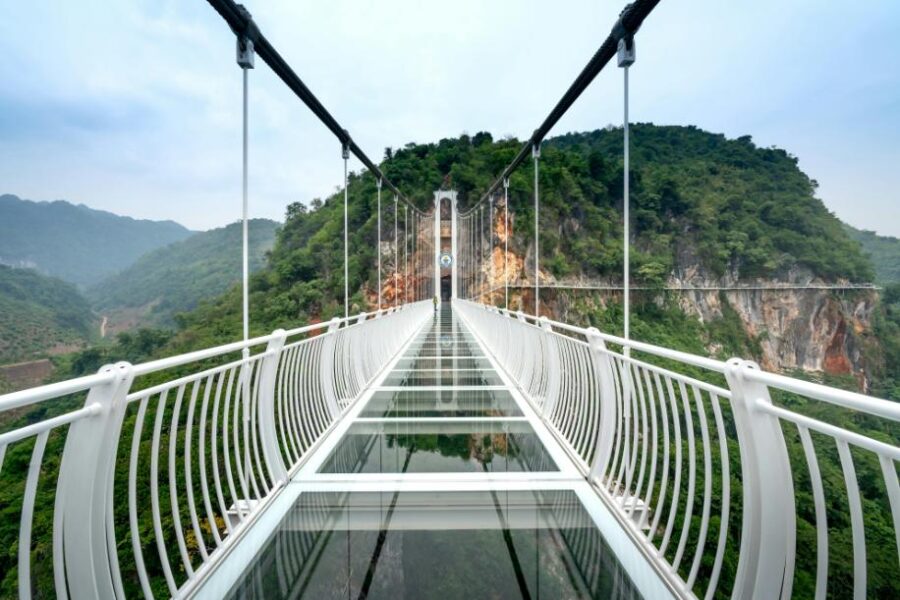
- Location: Zhangjiajie Grand Canyon, Hunan Province, China
- Key features: Longest and highest glass-bottom bridge in the world, suspended between sandstone cliffs, panoramic canyon views
Ever wanted to feel like you’re walking on air? This bridge gets you close. Zhangjiajie Glass Bridge links two cliffs with nothing but glass under your feet, so you can peer straight down—almost 300 meters—to the canyon floor.
The bridge floats where sandstone cliffs crash into thick forest. For me, the clash of raw rock and slick modern design is what makes it so bonkers. You’re literally hanging between worlds—solid earth and empty sky.
I remember clutching the rail, trying to convince my brain the glass was solid. Sure, it’s strong, but instinct says you’re about to plunge into thin air.
If you’re feeling gutsy, there’s a bungee jump here—one of the highest anywhere. But honestly, just walking across is enough to get your heart pounding.
13. Fly Geyser, Nevada, USA
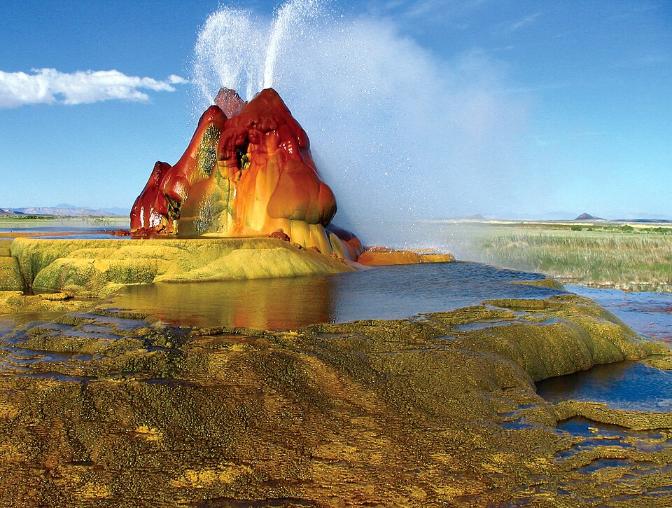
- Key features: Accidental geothermal geyser, vivid mineral colors, multiple water spouts
- Location: Fly Ranch, Black Rock Desert, Nevada, USA
Roll through Nevada’s Black Rock Desert and you’d never guess you’d find Fly Geyser. It’s not your classic “natural” geyser—people accidentally made it in 1964, drilling for geothermal energy.
Water from the well hit hot rock, and minerals started piling up around the opening. Over time, those minerals created these weird, cone-shaped mounds. Thermophilic algae love the hot water, which is why you get those wild greens, reds, and oranges.
The geyser sits on private land at Fly Ranch, so you can’t just show up. But you can book a guided tour to get close—close enough to feel the steam on your face and hear the hiss of water escaping.
When I first saw it, honestly, it felt like stumbling onto a movie set. The desert’s flat and pale, then suddenly—boom—a rainbow-colored fountain spewing hot water. Not exactly what you expect from Nevada, right?
12. The Wave, Arizona, USA
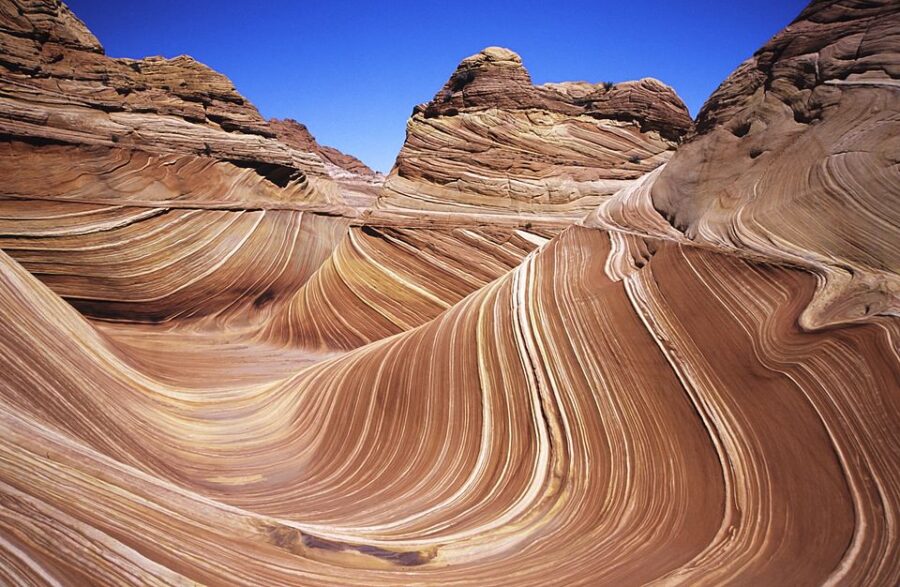
- Key features: Swirling Navajo Sandstone, red and orange patterns, remote desert location
- Location: Paria Canyon–Vermilion Cliffs Wilderness, near the Arizona–Utah border
Ever seen a photo of The Wave and thought, “No way that’s real”? But it is. This sandstone masterpiece got carved by wind and rain over millions of years and just chills in the desert, not even aware how Instagram-famous it is.
You’ll find it tucked inside Coyote Buttes North, part of the Paria Canyon–Vermilion Cliffs Wilderness. Getting there means hiking about three miles each way, and you’ll need a permit—only 20 people a day get the golden ticket.
The sandstone holds thin layers of ancient sediment, each one a little time capsule. The rock glows deep reds, oranges, and yellows that shift as the sun moves. The surface ripples into ridges and troughs, like waves frozen in place.
Standing there, it’s so quiet you mostly just hear the wind. The patterns aren’t just pretty—they’re a record of ancient dunes that rolled across this land long before any of us showed up. No camera can really do it justice.
11. Aogashima Volcano, Japan
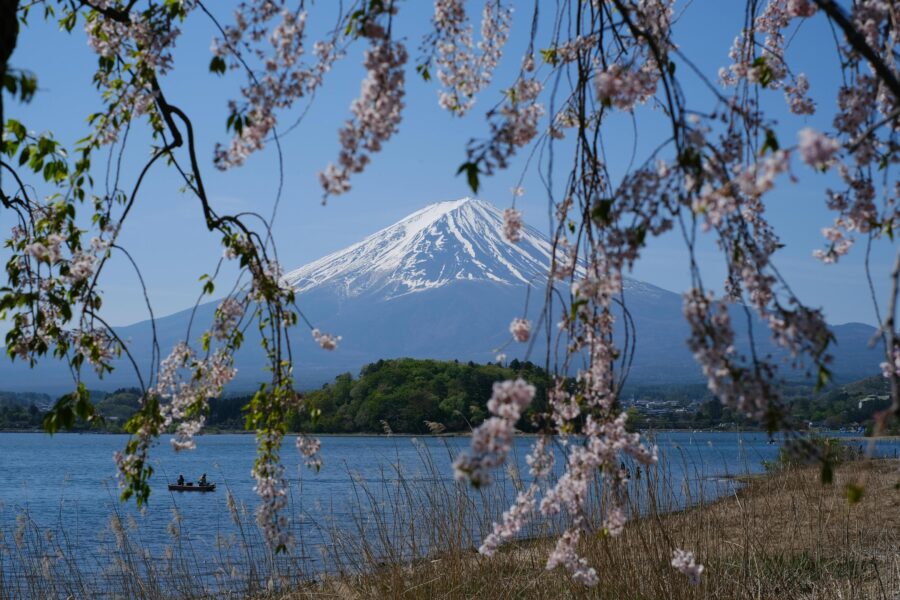
- Key features: Remote volcanic island, double caldera, active geothermal vents, tiny population
- Location: Philippine Sea, about 350 km south of Tokyo, part of the Izu Islands
Ever wondered what it’s like to live inside a volcano? Aogashima lets you try—literally. The whole island is a volcanic caldera, and smack in the center sits another smaller volcano called Maruyama.
The village? Fewer than 200 people call it home. They build their lives right on the inner slopes of the larger crater, day-to-day shaped by the volcano’s moods—cooking eggs in steam vents, relaxing in natural saunas.
The landscape’s a wild mix of steep ridges, lush green slopes, and steam rising from random pockets. At night, the sky’s so clear you can spot the Milky Way without any fancy gear. Light pollution? Not a thing here.
Getting to Aogashima takes some effort—a helicopter ride from Hachijō-jima or a ferry that only runs if the weather’s in a good mood. But if you make it, you’ll stand in one of the strangest, most quietly epic places people actually live.
10. Wulingyuan Scenic Area, China
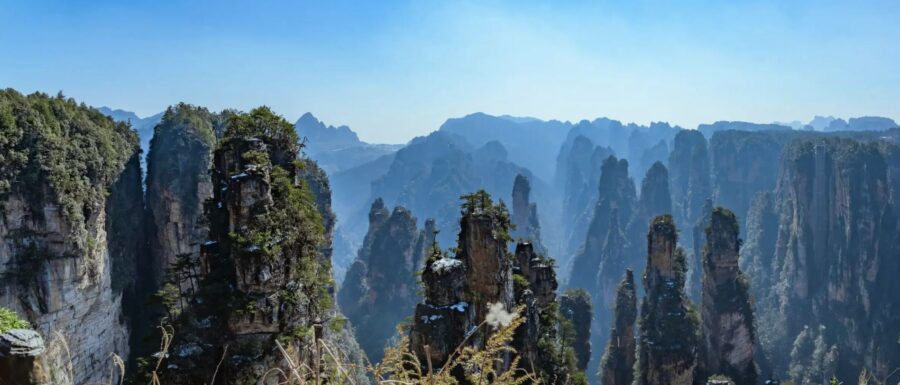
- Key features: Thousands of sandstone pillars, deep ravines, waterfalls, caves, UNESCO World Heritage Site
- Location: Zhangjiajie City, Hunan Province, China
Look at a photo of Wulingyuan and you’ll probably think, “No way that’s real.” But it’s right there in Hunan Province, with more than 3,000 sandstone pillars shooting up from the forest floor—some taller than 200 meters.
Wulingyuan wraps together Zhangjiajie National Forest Park, Tianzi Mountain, Suoxi Valley, and Yangjiajie. Over millions of years, erosion, wind, and water sculpted the quartz-sandstone into these razor-thin towers. Walking among them, you feel the cliffs almost leaning in, watching you pass.
The park bursts with dense forests, streams, and waterfalls slicing through deep gorges. In summer, mist hovers over the peaks, blurring their outlines and making everything feel dreamlike. Come winter, frost coats the rocks and the pillars look like they’re carved from ice.
I once stood on one of those glass walkways, knees shaking, staring straight down at a drop that seemed to go on forever. If heights freak you out, brace yourself. But honestly, it’s worth every wobbly step.
9. Socotra Island, Yemen
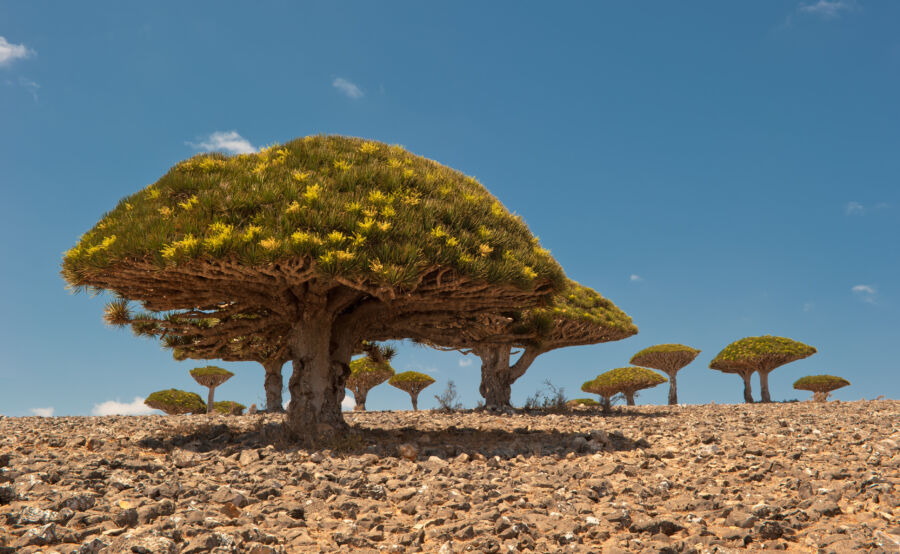
- Key features: Remote Yemeni island, unique biodiversity, endemic Dragon Blood Trees, UNESCO World Heritage Site
- Location: Arabian Sea, about 380 km south of Yemen and 240 km east of Somalia
Ever want to step into a place that doesn’t feel like anywhere else? Socotra does that to you. The island sits way out in the Arabian Sea, far enough from the mainland that its plants and animals had to invent themselves from scratch.
Socotra belongs to Yemen. It’s got Dragon Blood Trees you won’t find anywhere else. UNESCO put it on the World Heritage list in 2008.
Walking beneath those umbrella-shaped Dragon Blood Trees, you’ll spot their red resin oozing from the bark. Locals have used it for medicine and dye for ages—one of those little details you only pick up if you’re actually there.
The coastline flips from white sand to jagged cliffs in a blink. Inland, limestone caves hide cool freshwater pools, and wadis snake through dry valleys. You might even catch people speaking Soqotri—a language you’ll hear nowhere else on Earth.
It’s not the simplest place to reach, and maybe that’s why it still feels untouched. When you finally get there, you realize the isolation is part of what makes it so special.
8. Lake Hillier Pink Lake, Australia

- Key features: Bright pink saltwater lake, surrounded by forest and ocean
- Location: Middle Island, Recherche Archipelago, Western Australia
Flying over Middle Island, you just can’t miss Lake Hillier. The water jumps out at you—bright pink, like someone dropped food coloring in a giant puddle.
Green forest crowds the shoreline, and right next door, the Southern Ocean glows deep blue. That contrast is wild—honestly, it looks Photoshopped even in real life.
Scientists chalk up the color to Dunaliella salina algae and halophilic bacteria. These little guys pump out pigments that thrive in salty water.
Scoop up the water, toss it in a bottle, and yep, it stays pink. It’s not just a surface trick—the color sticks around.
You can’t just stroll up to Lake Hillier, though. The Department of Biodiversity, Conservation and Attractions keeps Middle Island pretty locked down.
Most folks see the lake from the air. I remember my own flight—the pilot banked the plane, and suddenly everyone gasped at that bubblegum-pink oval below.
It’s not the only pink lake in Australia, but it’s one of the rare ones that keeps its color all year. Others, like Pink Lake near Esperance, have lost their tint over time.
Lake Hillier just hangs out there, quietly weird and remote. It’s easy to forget places like this even exist until you see them for yourself.
7. The Door to Hell, Turkmenistan

- Key features: Fiery natural gas crater, continuous burning since 1971
- Location: Karakum Desert, Turkmenistan
Smack in the middle of the Karakum Desert, you might stumble on something that feels like it belongs in a sci-fi movie—a giant pit, just burning. The Darvaza Gas Crater, or “Door to Hell,” has been on fire for more than fifty years.
Back in 1971, Soviet geologists drilled for natural gas here. The ground caved in, swallowing their rig and leaving a gaping sinkhole.
To stop methane from spreading, they lit the thing on fire, figuring it’d burn out fast. Decades later, it’s still roaring.
Standing at the edge, you get hit by desert wind and heat rolling up from below. The crater’s about as wide as a football field, and the glow lights up the night for miles.
I once visited on a freezing night. My face felt toasty from the flames, even as my hands went numb.
The sound is a low, endless roar—like the world’s biggest campfire, except it never ends. It’s eerie, sure, but there’s something peaceful about it too. Maybe that’s just me.
6. Mount Roraima, Venezuela
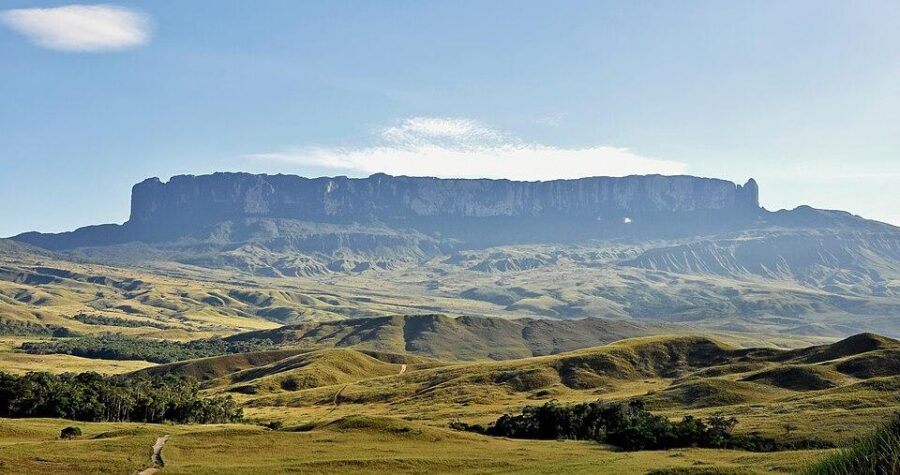
- Key features: Flat-topped mountain (tepui), sheer cliffs, ancient rock formations, unique plants and animals
- Location: Tripoint border of Venezuela, Brazil, and Guyana
Ever seen a mountain that looks like it got chopped flat on top? That’s a tepui, and Mount Roraima is the superstar—right where Venezuela, Brazil, and Guyana meet.
The summit is home to plants and animals you won’t find anywhere else. The rocks up there? Some of the oldest on Earth, hundreds of millions of years old.
The cliffs shoot up over 400 meters, so getting to the top isn’t just a casual stroll. It takes real effort, but that’s part of the draw, right?
The first time I saw Roraima from afar, I almost didn’t believe it was real. Clouds wrap around the plateau, and when sunlight hits, the whole thing shifts color.
Up top, it feels like you’ve landed on another planet. Strange rock shapes, little pools, and hardy plants dot the surface, all adapted to the thin soil.
It’s quiet up there. You mostly just hear the wind and maybe a bird or two.
If you’re into hiking, the Gran Sabana route from Venezuela is the classic way up. It’s a brutal climb, but honestly, standing on that summit feels like stepping onto another world—no spaceship required.
5. Waitomo Glowworm Caves, New Zealand
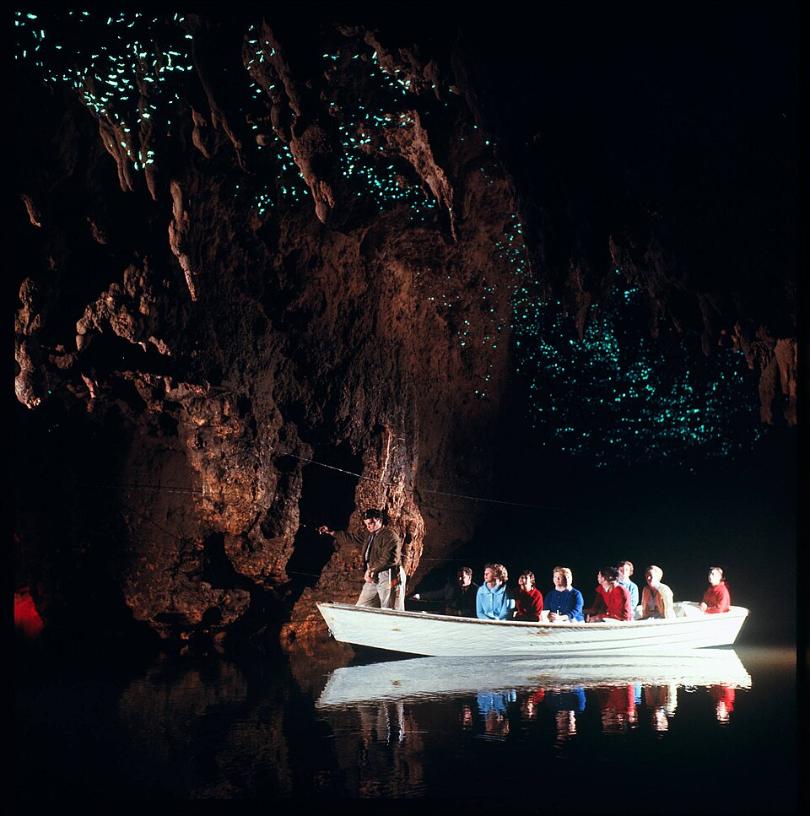
- Key features: Limestone caves, native glowworms, guided boat tours
- Location: Waitomo, Waikato region, North Island, New Zealand
Never been underground in pitch darkness? Waitomo Caves will totally change how you think about caves. They’re tucked under rolling green fields, but step inside and you’re in another universe.
The glowworms here—Arachnocampa luminosa—are only found in New Zealand. They cling to the ceiling, and their blue-green light bounces off the water below. No tricks, no LEDs—just nature doing its weird, wonderful thing.
Guides lead you through limestone chambers carved over millions of years. You float in a small boat, gliding under thousands of tiny lights—like drifting through an upside-down night sky.
The first time I went, I couldn’t stop craning my neck, trying to see where the “stars” ended. Spoiler: they don’t. You just keep drifting until the light fades and you step out, blinking, back into sunlight.
It’s so quiet down there, but the memory sticks with you for years. I still think about it sometimes when I can’t sleep.
4. Antelope Canyon, USA

- Location: Northern Arizona, near Page, on Navajo Nation land
- Key Features: Narrow slot canyon, smooth sandstone walls, light beams, natural wave-like patterns
Photos of Antelope Canyon almost look fake, right? But standing there, the colors and curves are exactly as wild as they look online.
Flash floods and wind carved the canyon over thousands of years. You walk through tight passageways, the sandstone walls smoothed into flowing, wave-like shapes.
Sunlight trickles in from above, sometimes forming those famous light beams that hit the canyon floor. On the right day, you’ll see dust dancing in the shafts of light.
The canyon’s got two main sections. Upper Antelope Canyon is famous for dramatic light shafts, while Lower Antelope Canyon winds tighter, twisting through narrower paths.
Both sections formed from water wearing down the rock, leaving behind these surreal corridors. Because it’s on Navajo land, you can only go in with a guide.
Honestly, that’s a good thing. The guides share stories and Navajo names for different formations, and it makes the whole experience feel deeper, more personal.
3. Pamukkale Thermal Pools, Turkey
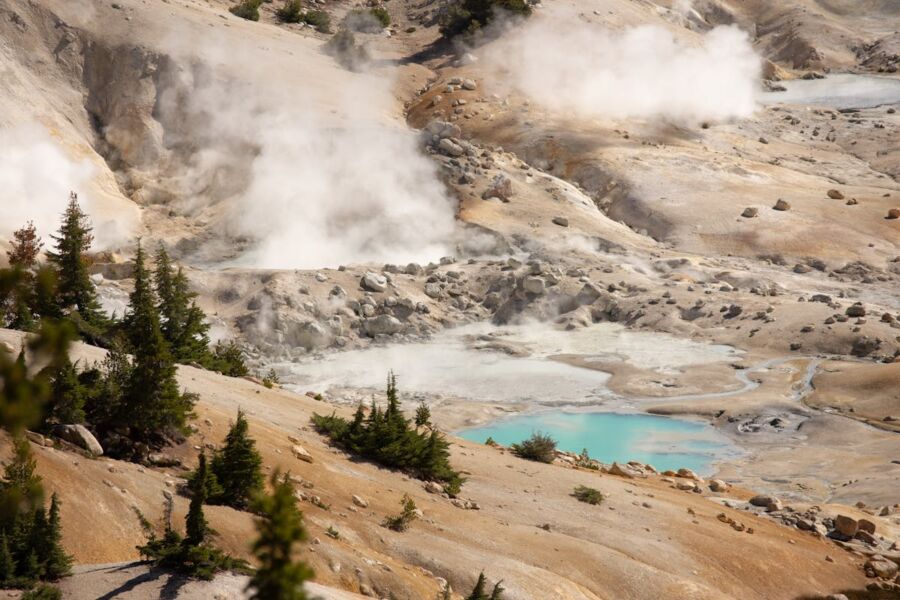
- Location: Denizli Province, southwestern Turkey
- Key features: White travertine terraces, warm mineral-rich springs, ancient ruins nearby
Photos of Pamukkale look like snowy hills, until you see the turquoise water spilling over the edges. The terraces build up as calcium-rich hot spring water flows down and leaves behind white mineral deposits. Over centuries, nature’s made this wild staircase of shallow pools.
Pamukkale sits in the Büyük Menderes River valley. Thermal springs feed the terraces with water that’s anywhere from 35°C to 100°C.
The white travertine forms from calcium carbonate deposits. You can walk barefoot along some areas, feeling warm water trickle past your toes.
It’s not slippery everywhere, but some spots are smoother than you’d expect. And yes, the water’s actually warm enough for a soak, even if the air’s chilly.
Right above the terraces, the ancient city of Hierapolis sits on top of the plateau. You can wander through Roman baths, a theater, and old necropolis ruins before heading back to the pools.
If you go early, you’ll dodge most of the crowds. That’s when the light’s soft, the pools are peaceful, and you can actually hear the water flowing. Trust me—it’s worth the early alarm.
2. Salar de Uyuni, Bolivia
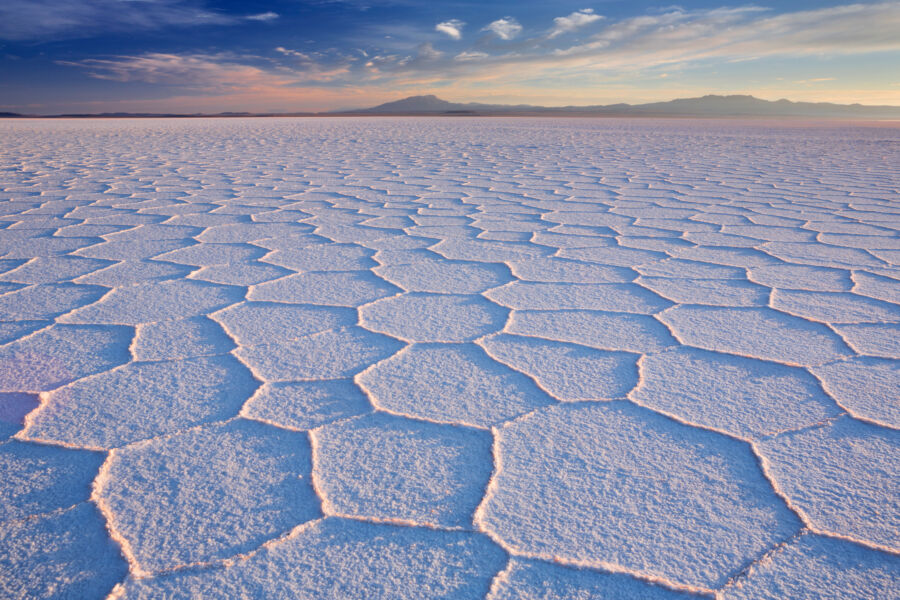
- Location: Southwestern Bolivia, Altiplano region
- Key Features: World’s largest salt flat, seasonal mirror effect, high-altitude landscape
Ever wondered what it feels like to stand somewhere that blurs the line between earth and sky? Salar de Uyuni gives you that moment. This massive salt flat sits at about 3,600 meters, where the air’s thin and the light feels almost too sharp.
During the rainy season, a thin layer of water covers the salt crust. Suddenly, Salar de Uyuni turns into a natural mirror. The sky reflects perfectly on the salt, and the horizon just sort of vanishes.
In the dry season, it’s a different vibe. The salt crust cracks into wild hexagonal patterns, stretching over 10,000 square kilometers.
I remember crouching down, running my hand over the salt. It’s not soft like beach sand—it’s hard, gritty, and leaves a fine dust on your fingers.
If you stay till nightfall, the sky explodes with stars. No light pollution means you get a show you’ll never forget.
1. Meteora Monasteries, Greece
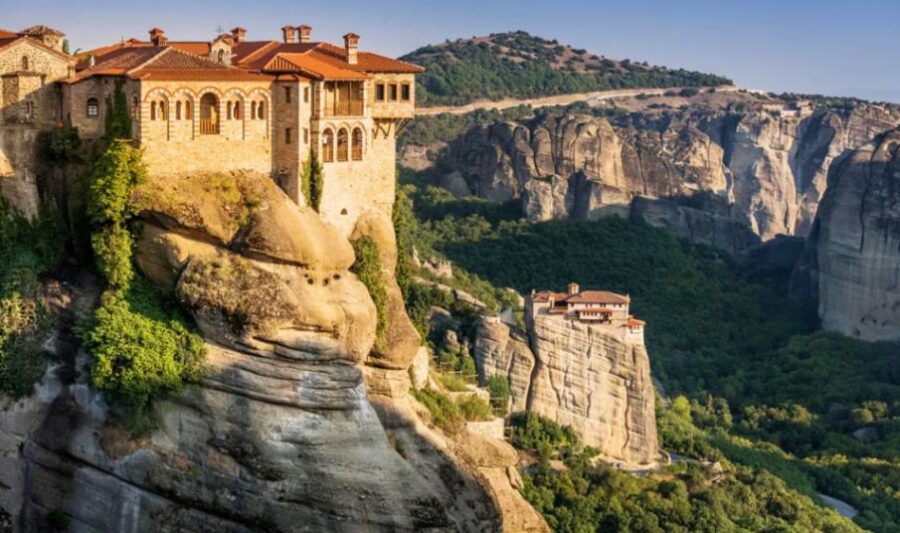
- Key features: Cliff-top monasteries, towering rock pillars, UNESCO World Heritage Site
- Location: Thessaly region, near the town of Kalambaka, central Greece
If you’ve ever seen photos of Meteora, you might suspect someone cranked up the Photoshop. Nope, it’s real. Giant rock pillars shoot up from the valley floor, and on top of them, centuries-old monasteries just cling to the stone like they belong there.
Wind and water spent millions of years sculpting these rocks. Eastern Orthodox monks showed up in the 14th century and decided, “Let’s build up there.” Their monasteries still house religious communities today.
When I stood at the base, the cliffs made everything else look tiny. Climbing higher, I felt this strange quiet the monks must have craved. It’s not just the height—it’s the way the buildings and stone blend together, almost like they grew there.
I visited on a gray afternoon, and mist drifted between the pillars. It felt like the whole place was floating. You can hike, drive, or even cycle between the monasteries, but honestly, the best moments come when you stop and just stare.
What Makes a Place Surreal?
Some landscapes look so odd your brain does a double-take. Maybe it’s wild colors, weird shapes, or patterns you never thought possible. Sometimes, it’s just the way nature and human effort collide.
Geological Phenomena
Lots of places owe their strangeness to geology. Volcanoes, erosion, and minerals can turn the ground into something that barely looks like Earth. Think of the neon sulfur pools in Ethiopia or Bolivia’s salt flats reflecting the sky.
Meteora’s pillars? All geology. In Peru, rainbow-colored mountains stack up from minerals layered over eons. Nature’s got a pretty wild color palette if you know where to look.
Scale can mess with your head, too. Stand at the bottom of a canyon or in a cave full of crystals the size of sofas, and suddenly you feel tiny. Odd shapes, wild colors, and rough textures all pile on the weirdness.
Unusual Ecosystems
Some places feel surreal because life there just does its own thing. Plants, animals, and even the tiniest critters create these environments that feel like fiction.
Take bioluminescent bays in Puerto Rico. At night, the water glows blue when you move it, thanks to microscopic organisms. Then there’s Socotra in Yemen—those dragon’s blood trees look like props from a sci-fi movie.
Sometimes, animals gather in numbers that don’t seem real. In Africa, flamingos pack the shoreline until it turns pink. These ecosystems usually exist in remote or extreme climates, which is probably why they evolved so differently from anything back home.
Human Perception and Imagination
Sometimes, a place feels surreal because of how you see it. Light, weather, and timing can flip the ordinary into the unforgettable. A desert at noon? Meh. At sunset, it glows with deep reds and purples.
Your expectations matter, too. If you’ve only seen a place in photos, finally standing there feels dreamlike—like you’ve walked into a memory. Salar de Uyuni’s mirror effect during rainy season? It’ll leave you gaping, trust me.
Honestly, half the magic is in your head. When you find yourself somewhere that feels impossible, your imagination fills in the gaps. That’s why some places just stick with you, long after you’ve left.
Frequently Asked Questions
Some of the most remarkable places on Earth hide far from the crowds, while others get famous for their rare, almost alien landscapes. There are even spots where nature puts on light shows or where old myths still echo in the rocks.
If you want to dodge the crowds, check out Aogashima Volcano in Japan. It’s a tiny island—basically a volcano inside a volcano—way out in the Philippine Sea.
The White Desert in Egypt is another world entirely. Its chalky rock shapes, carved by centuries of wind, make you feel like you’re walking across a frozen sea—except it’s all sand and stone.
What destinations offer the most unique geological formations on the planet?
The Wave in Arizona looks like someone swirled red and orange paint across the desert. Permits are tough to get, but that’s what keeps it so pristine.
Fly Geyser in Nevada? Total accident. Someone drilled a well, and now hot spring water covers it in wild mineral colors. It’s weird, but in a good way.
Where can travelers find the most vivid and unusual bioluminescent phenomena?
Mosquito Bay in Puerto Rico and the Maldives during plankton blooms both put on a serious light show. Tiny organisms light up when you move the water—every paddle stroke sparkles.
If you want something cooler (literally), the Waitomo Glowworm Caves in New Zealand feel like floating under a starry sky, except you’re underground. It’s honestly magical.
What are some of the most enigmatic and mystical natural sites to explore?
Meteorain Greece blends natural rock towers with centuries-old monasteries balanced on top.
Stand there for a moment, and you’ll almost feel the weight of history pressing in from every direction.
Zhangjiajie in China throws you right into a landscape of towering sandstone pillars—honestly, it’s like stepping into another world.
They say those pillars inspired the floating mountains in Avatar, and I can totally see why.
Crossing the glass bridge? It’s not just scenic; it’ll make your heart skip a beat (in a good way, I promise).
